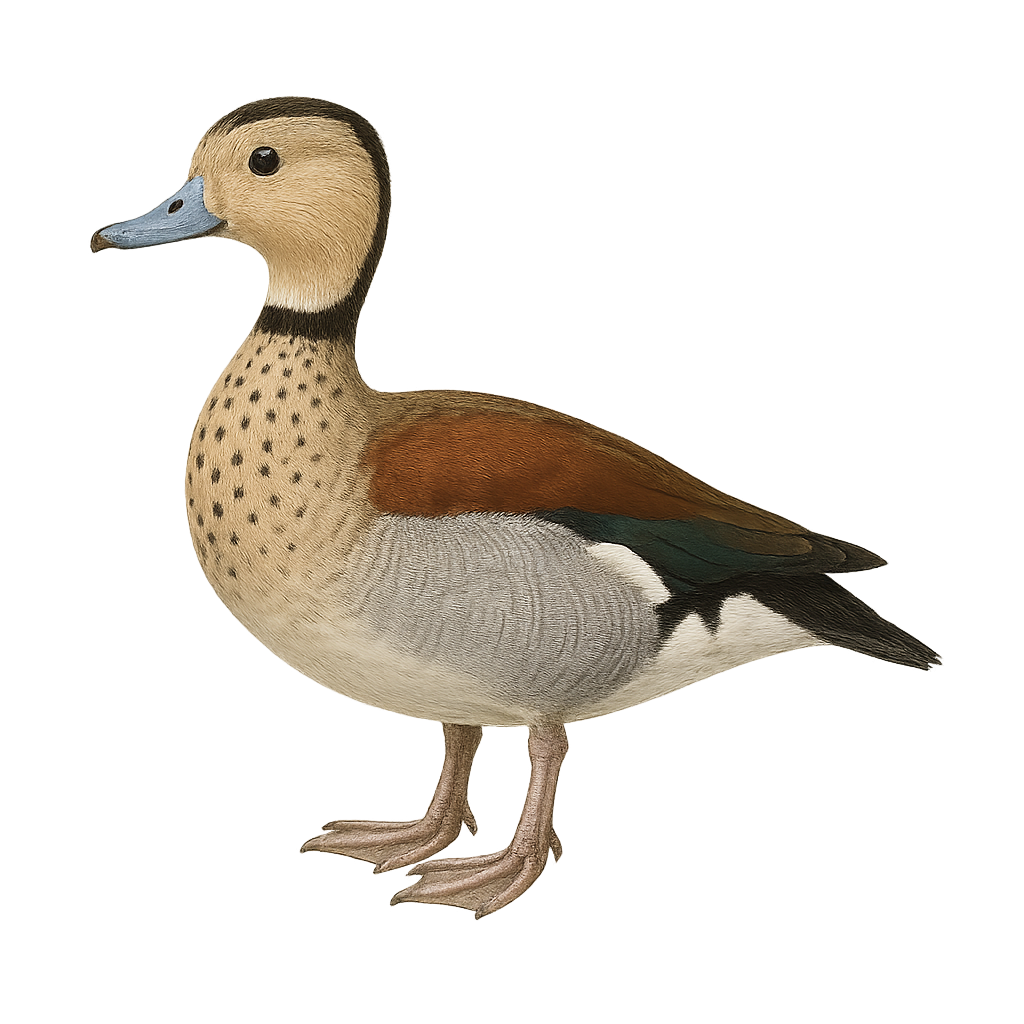Your wildlife photography guide.
Explore the ringed teal in detail, study its behavior, prepare your shots.
Where to observe and photograph the ringed teal in the wild
Learn where and when to spot the ringed teal in the wild, how to identify the species based on distinctive features, and what natural environments it inhabits. The WildlifePhotographer app offers tailored photography tips that reflect the ringed teal’s behavior, helping you capture better wildlife images. Explore the full species profile for key information including description, habitat, active periods, and approach techniques.
Ringed Teal
Scientific name: Callonetta leucophrys

IUCN Status: Least Concern
Family: ANATIDAE
Group: Birds
Sensitivity to human approach: Suspicious
Minimum approach distance: 10 m
Courtship display: September to December
Incubation: 26-28 jours
Hatchings: September to January
Habitat:
Marshes, lakes, wetlands
Activity period :
Primarily active during the day, with peak activity in the morning and late afternoon.
Identification and description:
The Ringed Teal, Callonetta leucophrys, is a small, elegant duck native to South America, primarily found in the wetlands of Paraguay, Brazil, and Argentina. It is distinguished by its colorful plumage: males have a reddish-brown head with a distinctive white band around the neck, while females display a more subdued brown-gray plumage with delicate patterns. These ducks prefer wetlands, marshes, and lakes with dense vegetation, where they primarily feed on seeds, aquatic plants, and insects. Although generally discreet, they can be observed in small groups, often in pairs. Their behavior is rather suspicious, but they can become accustomed to human presence in protected areas.
Recommended lens:
400mm – adjust based on distance, desired framing (portrait or habitat), and approach conditions.
Photography tips:
To photograph the Ringed Teal, it is advisable to use a telephoto lens of at least 400mm to capture detailed images without disturbing the bird. Look for wetlands where these ducks are known to gather, and be patient. The best times to observe them are early in the morning or late in the afternoon when the light is soft and activity is at its peak. Stay discreet and avoid sudden movements to prevent scaring them away.
The WildlifePhotographer App is coming soon!
Be the first to explore the best nature spots, track rutting seasons, log your observations, and observe more wildlife.
Already 1 439 wildlife lovers subscribed worldwide

